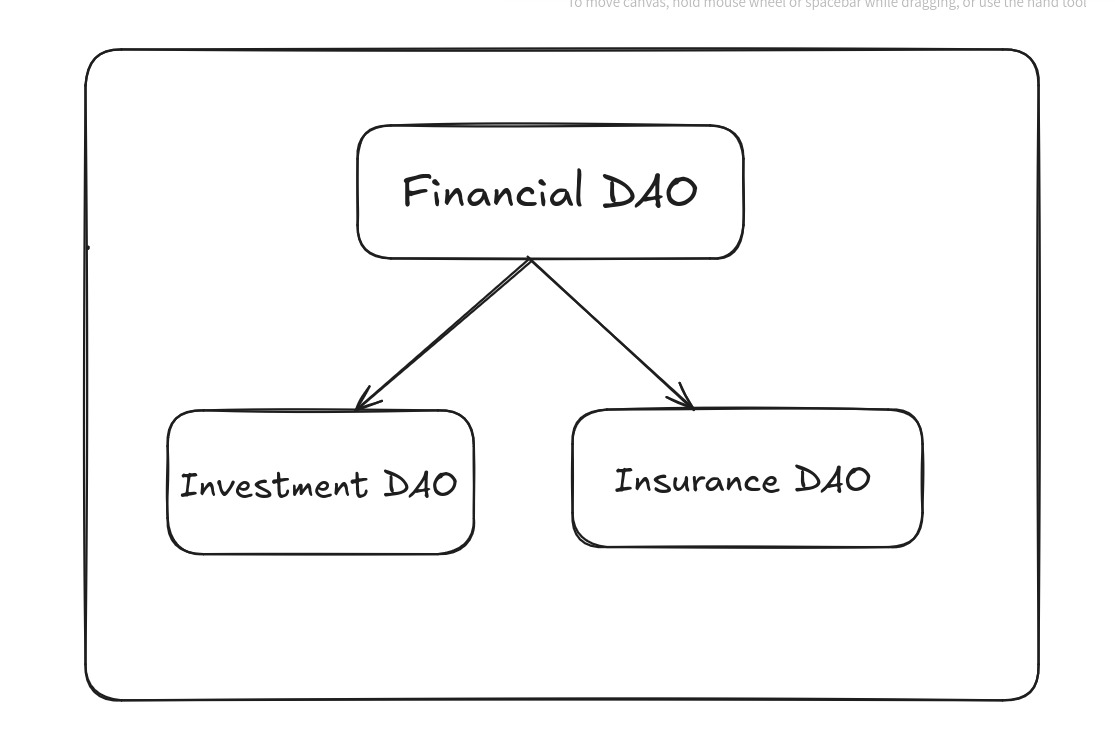What is a financial DAO?
 PandaoBlog
PandaoBlog
The Financial DAO feature in Pandao offers comprehensive tools designed to manage shared financial resources within decentralized organizations, ensuring that community governance and transparency remain at the core of decision-making processes. One of the most significant aspects of this feature is its treasury management system, which allows DAOs to securely store and manage the funds pooled by their members. This is crucial for enabling decentralized organizations to operate without centralized intermediaries while maintaining control over their financial resources.
Transparent fund allocation is another key component of the Financial DAO feature. The system allows members to view and track how funds are being distributed across various activities, projects, or investments within the organization. This transparency fosters trust among members, as they can see the financial decisions being made and ensure that resources are being used in ways that align with the community’s values and goals. The ability to audit financial activities in real-time also reduces the risk of mismanagement or fraud, as all transactions are recorded and made publicly accessible to members.
At the heart of the Financial DAO feature is its governance mechanism, which empowers members to collectively decide on how resources are spent or invested. The platform integrates voting tools, where members can propose, debate, and vote on financial decisions, ensuring that each member has a say in the financial direction of the organization. Whether it's funding a new project, making an investment, or allocating resources for operational costs, these decisions are made democratically, with the votes of the members determining the outcome.
Overall, the Financial DAO feature in Pandao emphasizes a community-driven, transparent approach to managing organizational finances, making it easier for decentralized organizations to operate efficiently while ensuring that financial decisions reflect the collective will of the members. This system of shared responsibility and control over funds helps to foster inclusivity and long-term sustainability in DAO operations.
Here are five detailed points that highlight the key functionalities and benefits of this feature:
Treasury Management:
The treasury management system in Pandao enables decentralized organizations (DAOs) to effectively manage their financial assets. This feature provides a secure way to store, track, and allocate funds while ensuring that all financial transactions are transparent and auditable. Members can easily monitor the current balance of the treasury and see how funds are being utilized across different projects. By having centralized visibility into the DAO’s financial health, members can make informed decisions about future resource allocations. Additionally, treasury management tools support integration with various cryptocurrency wallets and other DeFi platforms, allowing DAOs to diversify their assets and optimize their financial strategy.
Transparent Fund Allocation:
One of the core benefits of the Financial DAO feature is its transparency in fund allocation. All financial movements, including investments, donations, and operational expenses, are visible to all DAO members. This transparency helps build trust and accountability within the organization, as it eliminates the potential for mismanagement or fraudulent activities. Every transaction is recorded on the blockchain, providing a public ledger that members can audit in real-time. This level of transparency ensures that resources are distributed in alignment with the community’s goals, whether it’s funding a new project, contributing to community initiatives, or sustaining the DAO’s ongoing operations.
Community-Driven Decision Making via Voting:
A key aspect of the Financial DAO feature is its voting mechanism, which empowers members to participate in the governance of the organization’s finances. Voting allows members to propose, discuss, and approve financial decisions, such as how resources should be allocated or invested. This participatory governance ensures that financial decisions reflect the will of the community rather than a centralized authority. Each member has a voice in the decision-making process, and the outcome of votes is binding, ensuring that the majority consensus shapes the financial future of the DAO. This mechanism promotes fairness, inclusivity, and democratic decision-making within decentralized communities.
Tracking Financial Transactions:
The ability to track all financial transactions is a vital feature of the Financial DAO system in Pandao. Members can access detailed records of every financial action, including income, expenditure, and investments made by the DAO. This real-time tracking allows for better financial planning and helps identify areas where funds may be underutilized or misallocated. By providing a clear overview of past transactions, the platform allows members to assess the financial health of the DAO and make data-driven decisions. This transparency also enhances accountability, as members can ensure that financial resources are being used effectively and responsibly.
Governance and Resource Allocation:
The Financial DAO feature ensures that resources are not only allocated transparently but also in a way that is governed by the collective will of the DAO’s members. The platform’s governance tools make it easy for members to propose financial initiatives, whether it's funding a new project, making strategic investments, or supporting community-driven actions. The integration of smart contracts ensures that once a proposal is approved by the majority, the necessary funds are automatically allocated and disbursed according to the terms of the vote. This automation reduces administrative overhead and ensures timely execution of decisions. It also helps mitigate human error, ensuring that financial operations are executed as intended.
Subscribe to my newsletter
Read articles from PandaoBlog directly inside your inbox. Subscribe to the newsletter, and don't miss out.
Written by
